Understand your fall factors to reduce the risks!
There are three fall factors in fall arrest that relate to the position of the anchorage point. They are used to determine the potential fall distance of a worker and so ensure that there is no risk of contact with the lower level in the event of a fall. When possible, the worker should always use an anchorage point at shoulder level or above (Factor 1 or 0). A higher anchorage point will reduce the fall distance and therefore significantly reduce the risk of injury on the body due to the impact forces of a fall.
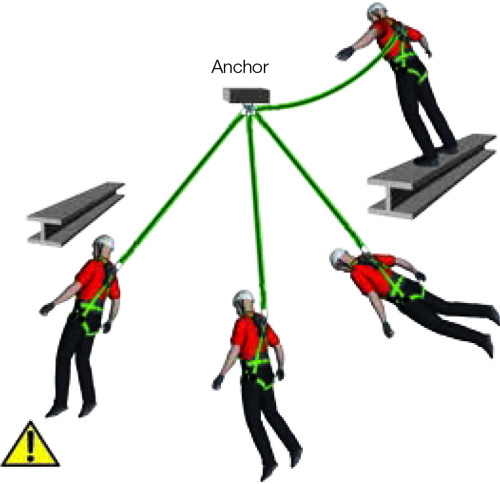
THE PENDELUM EFFECT
When the lifeline is not anchored vertically over the work place, the worker will pendulum in the event of a fall and may be injured by hitting the ground or an obstacle to the side. If it is not possible to use an anchorage point close to the work station, two anchorage points either side of the worker can be used to prevent any swing.
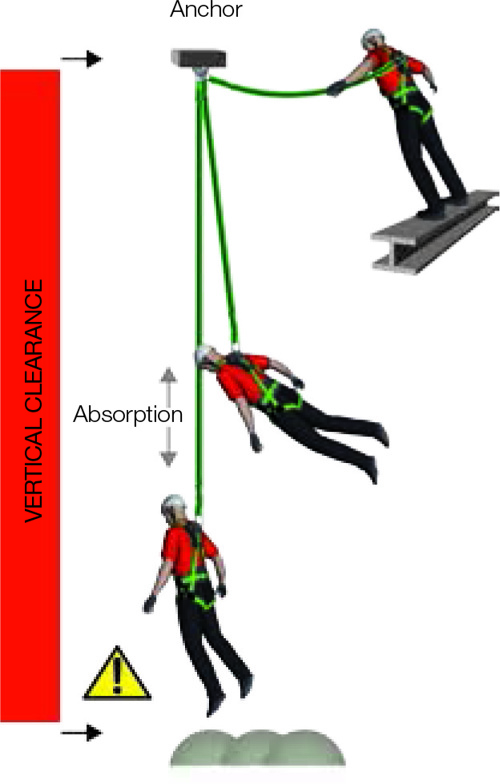
FALL CLEARANCE CALCULATIONS
This is the distance a person will fall when connected to a fall arrest attachment point. It is related to the Fall Factors (see Fall factor). Many situations can develop and it is ultimately the responsibility of the worker to ensure that there is a suitable fall clearance available. In order to calculate this, the worker must know the distances specified below, and it is also strongly recommended they attend a Fall protection training course.
The calculation below gives the minimum vertical clearance required between the anchorage point of the lanyard and the lower level.
Length of lanyard
+ Fully activated energy absorber
+ Body height from feet to harness attachment
+ Additional safety clearance
Examples:
Calculations using the following length lanyards are as follows:
- 2m lanyard: 2m (lanyard length) + 1.75m (energy absorber) + 2m (body height) + 1m safety = 6.75m
- .5m lanyard: 1.5m (lanyard length) + 1.5m (energy absorber) + 2m (body height) + 1m safety = 6m
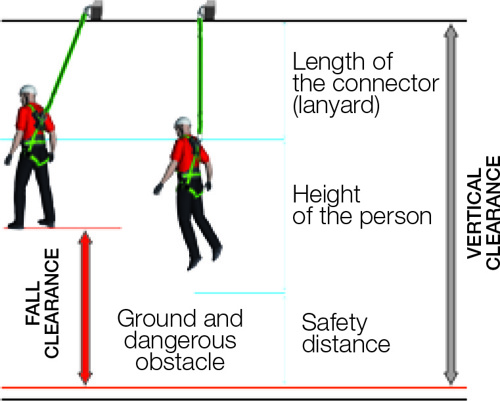
FALL FACTOR 0
Anchorage is overhead and the lanyard is taut between the anchorage point and the worker. The fall clearance is reduced as shown.
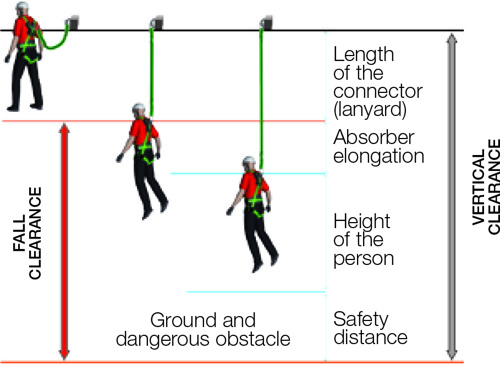
FALL FACTOR 1
Anchor point is level or above the harness attachment point allowing a fall equivalent to the length of the lanyard before the energy absorber deploys to arrest the fall.
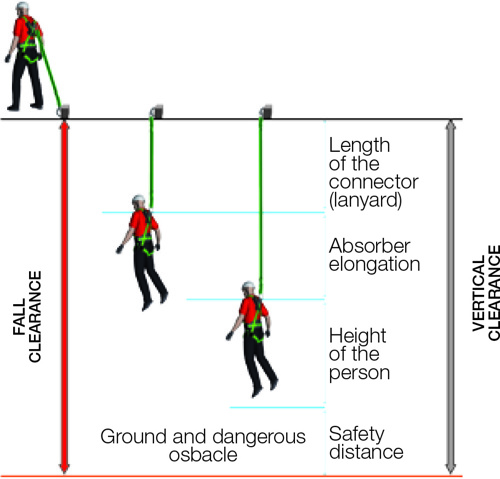
FALL FACTOR 2
Anchor point is at or below the feet of the worker allowing a fall equivalent to twice the length of the lanyard before the energy absorber deploys to arrest the fall.
IF IN DOUBT: FALL LIMITERS REDUCE FALL CLEARANCE < 3M
A fall limiter or self-retracting lifeline will stop a fall in centimetres and is therefore the ideal solution for low-level work where a shock-absorbing lanyard is unable to stop the worker from hitting an obstacle below.
